Here, in part 3 of our series on dairying without removing calves from their mothers, we look at the importance of managing a calf’s nutrition in order to support the effective calf rumen development, essential to her long-term health and productivity.
Cows are metabolic marvels
Have you ever stopped to consider just how amazing cows are? They take grass and other cellulose-based forages that we humans can’t digest, and metabolise them overnight, through microbial action, into nutritionally-rich food that we can digest. They really are metabolic marvels!
Cows are ruminants and turning grass into milk, and meat, is something ruminants excel at. It’s one of the reasons why 100% grass-fed Pasture for Life cows will always play a significant role in sustainable food production.
Ruminants acquire their nutrition by fermenting their food under anaerobic conditions in a special stomach called a rumen. In fact, cows have four compartments for digestion but the rumen is the biggest and what makes cows so special.
The rumen of an adult cow
In an adult cow, the rumen is, in effect, a very large pillow-sized bio-digester, full of a delicate balance of bacteria, fungi, protozoa, yeasts, methanogens and other microfauna. Just to blow your mind, it’s estimated that in just 1ml (a fifth of a teaspoon) of her rumen fluid, there are between 10-50 billion bacteria and 1 million protozoa!
When a cow takes a bite of grass or browses the hedgerows, she is not really feeding herself, but all the microbes in her rumen. In fact, most of the cow’s nutrition comes from the by-products of the microbial fermentation of what the cow eats, plus the rapidly reproducing microbes themselves (some bacteria in the rumen live for just 15 minutes). All this fermentation, digestion and reproduction produces vast amounts of heat, so the rumen is also the furnace that keeps the cow warm in winter.
A healthy well-functioning rumen is absolutely critical to the effective and efficient fermentation of a cow’s food, and this is vital not only for her health and her productivity, but also for the nutrient value and flavour of her milk (or meat in the case of a beef animal).
The foundation for a healthy, well-developed rumen is set at a very early age.
The rumen of a calf
When a calf is born its rumen is very small, underdeveloped (non-functioning) and sterile. The first inoculation of bacteria comes from the cow as she licks her calf, the environment into which the calf is born and the birth canal if the amniotic sac is broken before the calf’s head emerges. As the calf grows, the types of bacteria in its rumen are gradually replaced by those that are best adapted to what it eats, licks or sucks.
While the calf is suckling the cow and consuming primarily cow’s milk, its rumen does not develop very quickly. This is because most of the milk by-passes the rumen, via the esophageal groove, directly into the abomasum, one of the other compartments, for digestion. Any milk that does enter the rumen does not help development anyway, as rumen function is dependent upon fibre. This is required to feed the microbes in the rumen that will eventually begin the fermentation process.
In a beef suckler herd
In a beef suckler herd, the rumen begins growing at 2 to 3 weeks of age, when the calf starts eating fibre (grass/hay). Environmental populations of microbes, especially those in cow muck that is likely to be on the cows’ teats and on the grass or bedding, further inoculate the rumen with the right sort of bacteria to allow the fermentation process to begin.
In these early days, the ‘scratch’ effect of fibre is very important for two reasons. Firstly, it stimulates the growth of the many papillae (finger-like villi) that line the rumen wall. It also prevents the build-up of a layer of keratin (from continuously regenerating epithelial cells) on the rumen surface. A keratin layer would reduce absorption, blood-flow and motility and, in extreme cases, lead to degeneration of papillae.
During the first 5 to 6 months of a calf’s life, the rumen goes through a growth and development phase that is disproportionately fast compared to the rest of its body. This is why feeding the calf appropriately during this allometric growth phase is vital for establishing the foundation for optimum rumen function, and therefore health, for the rest of the cow’s life.
A dairy suckler herd is different
You will note that I referred earlier to the growth of the rumen starting at around 2 to 3 weeks in a beef suckler herd. When you run a cow-calf dairy, in effect a dairy suckler herd, this has the potential to have a significant impact on rumen development for the following reason:
A dairy cow is a bovine selectively bred to produce copious quantities of milk, far more milk than one calf needs. If a calf is left on a dairy cow 24/7 the amount of milk available to him far exceeds his nutritional requirements. A fellow calf-at-foot dairy farmer told me recently that he reckoned that by 12 weeks old his calves were drinking up to 15L per day!
Having continuous access to all this milk can mean calves get so full with milk that it significantly suppresses their desire to eat enough of the fibrous materials essential for rumen development. Not getting enough fibre during their first 5 to 6 months, the critical allometric growth stage, will negatively impact rumen development, with the potential knock-on impact of long-term, impaired rumen function as an adult.
Beef cows, by contrast, produce much less milk, so although the calf will have a good drink from mum, he won’t get anything like as full as a calf left on a dairy cow 24/7. Suckling on a dam with a more natural milk production, a beef calf will be more incentivised to start grazing grass or eating hay much sooner, and eat more of it when he does.
Cow-calf dairying at Smiling Tree: what we do and why
I have wrestled with this dichotomy over the years. On the one hand I’ve wanted to leave the dairy calves with their mums 24/7 because in my anthropomorphic mind this seems the natural thing to do. But on the other, I’ve learned that it’s not natural for a calf to have so much milk and that my kindness could, in fact, be very detrimental to the calf in the longer term.
So our calves have access to suckle for up to 16hrs per day, what I call long-duration suckling. This means they have a more natural daily milk intake, more closely reflecting the amount beef calves might get. For 8hrs, at night, when they are naturally sleeping, they can’t nurse. However, they are not separated from their mums, they are right next to them, can lick and touch them, but just not reach to suckle.
I will explain exactly how we do this in a stress-free way at Smiling Tree later in the series. Next, we’ll look at the udder development of heifers as this too is affected by early nutrition.


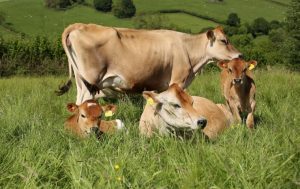
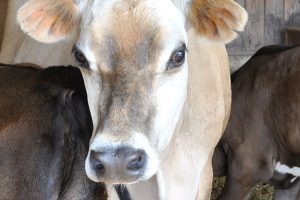
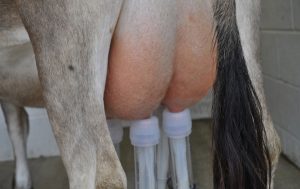
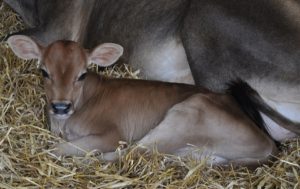
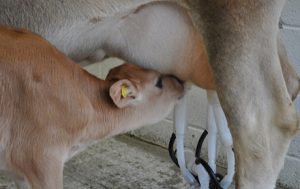
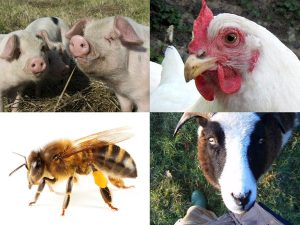
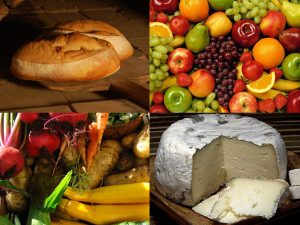
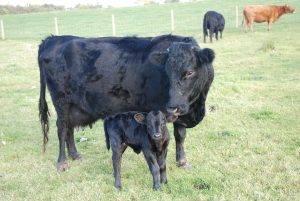
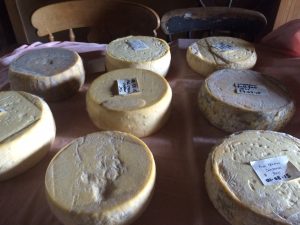
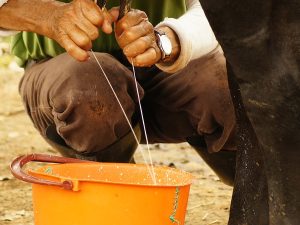
1 Comment
Thanks Christine, I’m excited to read this series, I didn’t realise anyone was doing this. I’ve been dairy free for years because of ethical concerns, but the rest of my family consume loads of dairy. I once cooked up a scheme to keep goats, goat-kid dairying I suppose, but I thought it was just my own crazy idea, and we never got the land. I really hope this practice can become more widespread. Looking forward to reading more.